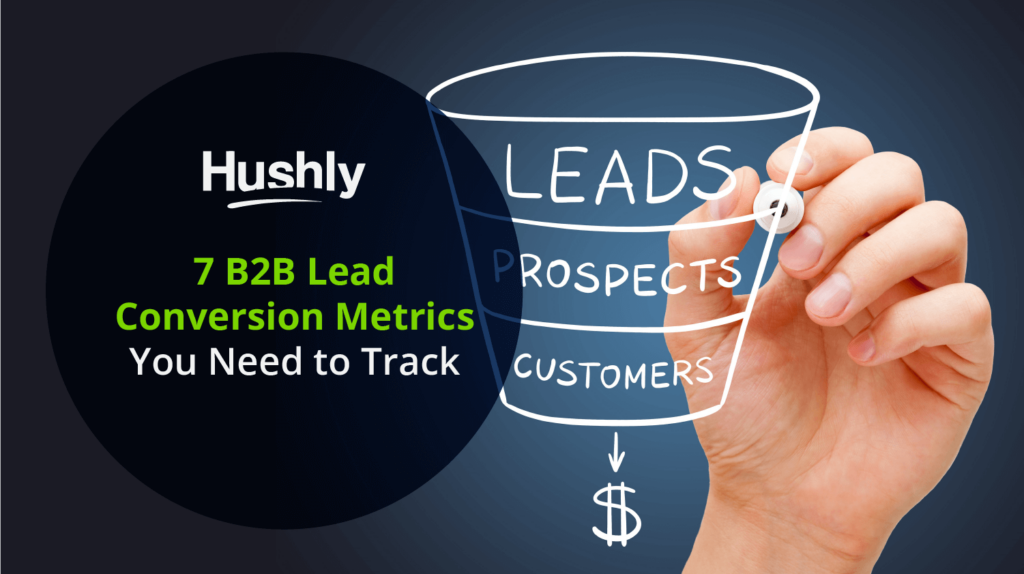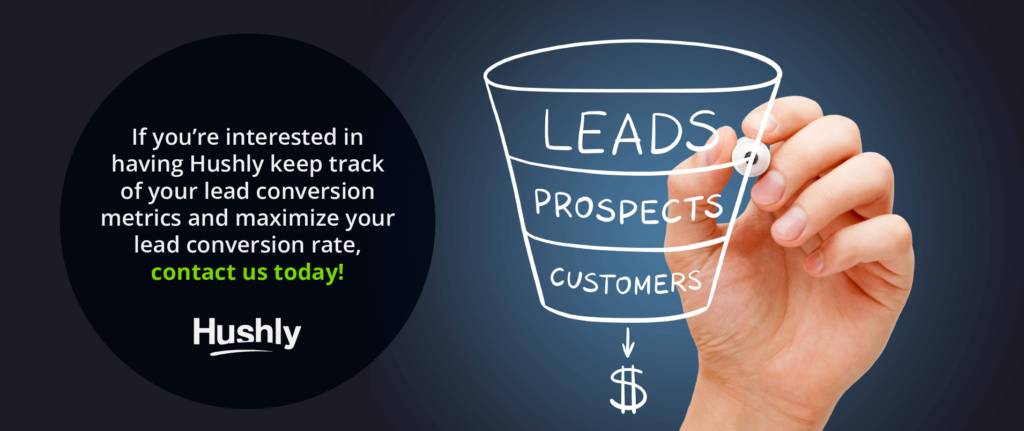Filters
Content Type
Topic
7 B2B Lead Conversion Metrics You Need to Track
Your marketing team works hard, generating what they believe to be high-quality leads. It sends them in good faith to the sales department expecting a healthy or above-average lead conversion rate.
In an ideal world, your sales team could convert 100% of leads into sales, but everyone involved knows that isn’t happening. Instead, the sales team must first identify the most promising leads and spend time tracking them down.
In the worst case, your sales team can’t manage a decent conversion rate on their leads, and suddenly marketing and sales are blaming each other for lack of results.
How can you, as a manager, determine where the shortfalls lie and correct the processes in time for the next lead generation campaign?
Your only way through a situation like this is to dig into the numbers and uncover some secrets about how your company converts leads. To that end, we recommend a few key metrics that we’ll discuss in today’s guide.

What is Lead Conversion?
In sales and marketing, lead conversion refers to the rate at which leads (prospective customers) finish the buying process and become customers.
A higher lead conversion rate is better since it indicates that a higher percentage of your customers are spending money with your company. A low lead conversion rate is concerning and can directly impact your revenue stream.
Lead conversion is a job not just for salespeople but also marketers. The two work in tandem: marketing generating leads and salespeople converting them.
A low conversion rate is often caused by some combination of these two departments, if not some external process.
A Good Lead Conversion Rate Will Vary by Industry
Keep in mind that what constitutes a ‘good’ lead conversion rate will differ by industry. Some industries, like professional services, enjoy conversion rates over 7%. A real estate agent, however, would see conversion rates around 3%.
Why Tracking Your Lead Conversion Rate Matters
Your lead conversion rate is not just a reflection of how talented your sales team is; of course, they have a great deal of influence over the number.
It’s also a measure of the quality of the leads your marketing team is generating, as well as the strength of your product.
A high lead conversion rate is desirable. It means your marketing and sales are working in harmony, and customers are enjoying the experience of buying from you.
A low lead conversion rate is a problem in and of itself. It means your sales team wastes time on leads that aren’t converting regularly.
Properly tracking the raw lead conversion rate and other related metrics, like the ones listed below, can reveal a tremendous amount of information about your operation from end to end.
For example, low conversion rates could be due to poor sales performance. But it could also be because your demand generation operation is too focused on quantity instead of quality.
Increasing your lead conversion rate, in this case, could be as simple as pruning your lowest-quality leads from the stack before it makes it to sales: a simple solution only visible because you properly tracked and understood your lead conversion metrics.
How Hushly Can Help
Hushly can make the process of tracking lead conversion metrics something you don’t even have to think about it. We’ll do it for you.
Our proven, data-driven approach can help you track and improve your lead conversion metrics.
Hushly understands the myriad reasons that your lead conversion rate could be low. From content to page clicks and abandonment, we consider every aspect of your lead conversion to identify unoptimized processes and implement solutions.
7 Lead Conversion Metrics to Track
Here are 7 lead conversion metrics you can start using today to optimize your conversion rate.
1. Lead Conversion %
It’s crucial that you track your lead conversion rate.
Lead conversion is the ratio between leads who become customers and those who don’t.
2. Cost Per Conversion
This high-level metric tracks the total cost of advertising, marketing, and your sales operation against the number of conversions you’re completing.
Essentially, it’s how much you’re paying for each customer you gain from start to finish.
3. ROI Per Conversion
Related to cost per conversion, ROI per conversion measures how much you’re getting back for each new customer.
To find your ROI per conversion, subtract the cost of your conversions from the value generated by them. Then, divide that sum by your total number of conversions.
4. Cost Per Lead
Cost per lead is your lead generation operation’s budget divided by the number of leads they generate.
This is a metric where higher (or lower) is not always better. You may get lots of leads cheaply, but if their quality is consistently terrible, you won’t be converting much. Likewise, paying a lot per lead doesn’t mean you’re getting high-quality leads.
You’ll need to use this number in concert with other metrics to determine if you’re paying too much per lead.
5. Time to Conversion
Measuring how long it takes to convert a lead is extremely important, depending on your industry.
Though some industries may quickly convert leads naturally, others will move more slowly. It’s important to compare a metric like this to your industry competitors rather than across all businesses.
6. Revenue Contribution of Converted Leads
Take a look at how much total revenue your converted leads are generating. This information is useful on its own but can be broken down in several helpful ways.
You can look at the revenue contributed by converted leads per salesperson, department, and even advertising campaign.
7. Opportunity Win Rates
Win rates are a way of tracking how many deals close. Much like some of the other stats on this list, you can break down opportunity win rates in several creative ways.
We recommend taking a look at win rates and then breaking them down in the following ways:
- by Opportunity Owner
- from Converted Leads
- by Lead Owner
- by Lead Source
- by Campaign
Combine Statistics for a Holistic Evaluation
When analyzing your lead conversion rate, the more helpful information you can work into the picture, the more comprehensive it will be.
Remember that your numbers are only as valid as the context they’re viewed in. In the example of raw lead conversion rates, low numbers could be due to several factors, and it would be shortsighted to simply assume that your sales team just isn’t as good as it used to be.
Instead, we recommend a complete and holistic approach to your review process. Start with some of the metrics on our list, and if you’re still unsure of where to start making improvements, remember that Hushly can take this job on for you.
If you’re interested in having Hushly keep track of your lead conversion metrics and maximize your lead conversion rate, contact us today!
The post 7 B2B Lead Conversion Metrics You Need to Track appeared first on Hushly.



